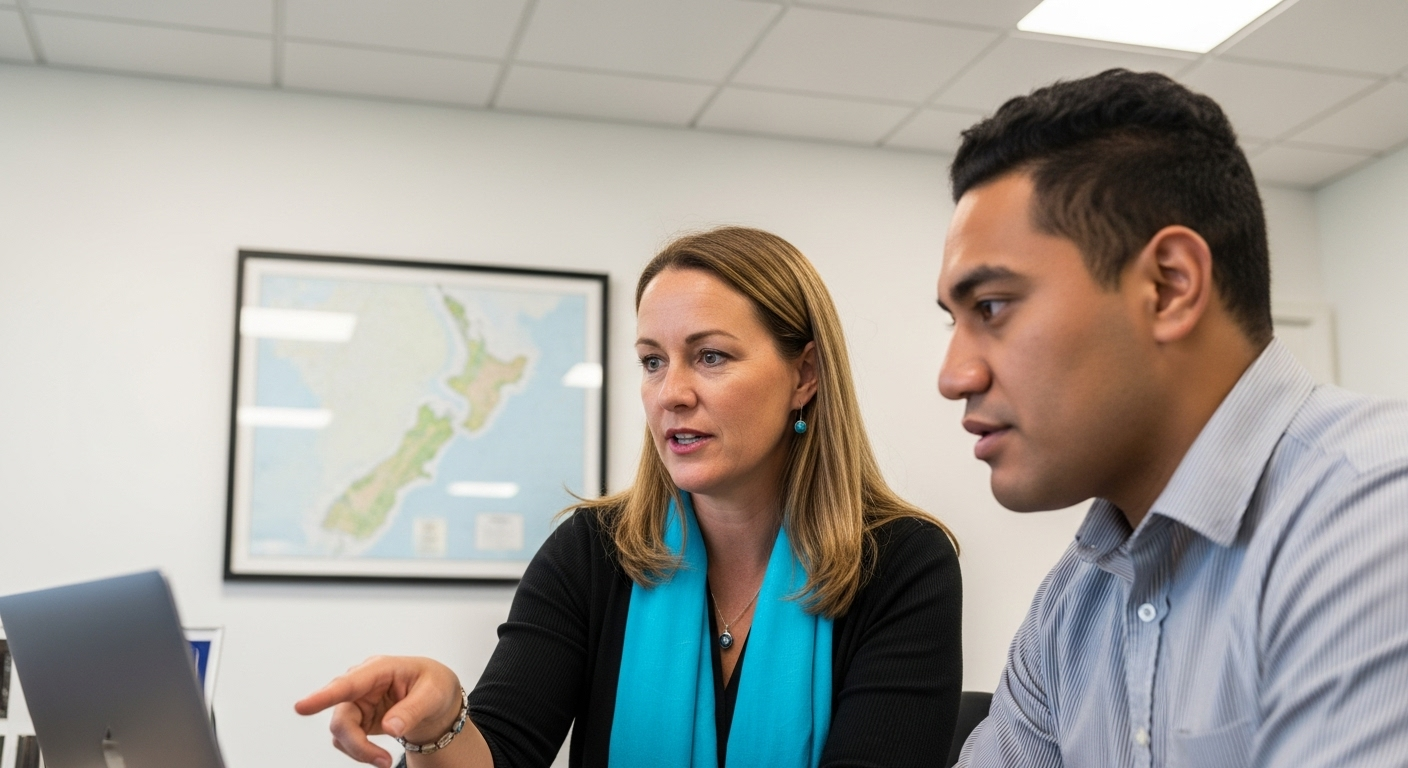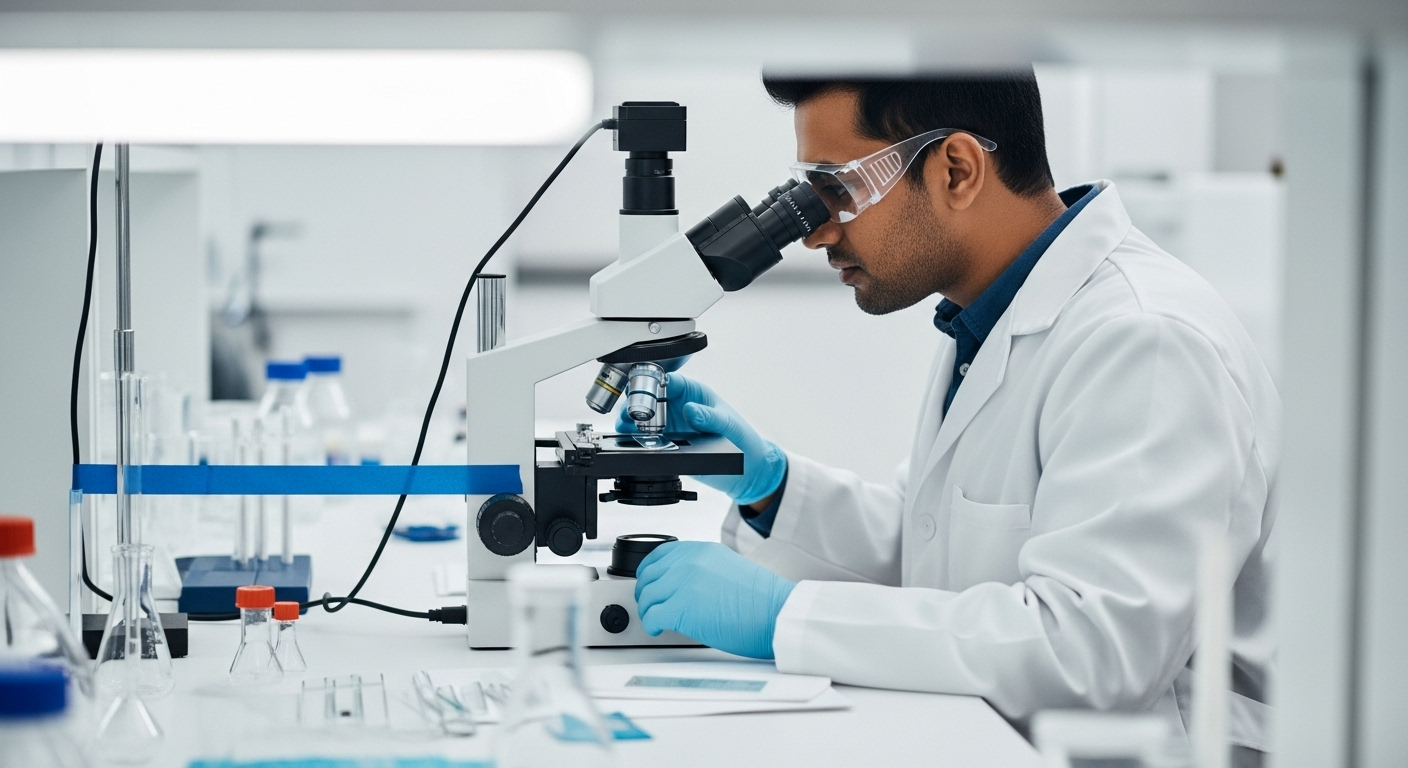The Full Spectrum: Asbestos Testing, from Sample to Analysis to Report
Asbestos Sampling and Testing NZ: A Step-by-Step Guide
Key Takeaways
- Asbestos remains a serious health risk in New Zealand, contributing to approximately 220 deaths from related diseases each year.
- The professional testing process involves a visual inspection, safe sample collection by a qualified surveyor, and analysis by an IANZ accredited laboratory.
- DIY asbestos testing is extremely dangerous as it can release harmful fibres; always use a professional with the correct safety equipment and training.
- A detailed lab report will identify the presence, type, and location of any asbestos-containing materials (ACMs), enabling you to make informed safety and remediation decisions.
If you own a property in New Zealand built before the year 2000, there's a lingering question you can't afford to ignore: could there be asbestos hidden in the walls, roof, or floors? It’s a reality we deal with every day. The legacy of this once-popular building material is a serious one.
The stakes are incredibly high. In fact, approximately 220 New Zealanders die annually from asbestos-related diseases. It's not a historical problem; it's a present and ongoing health risk. Recent discoveries have shown just how widespread the issue remains. In 2024 alone, inspections revealed asbestos in roofing, insulation, cladding, and vinyl flooring across schools, state homes, and commercial buildings.
As independent consultants at Asbestos Safe Consultancy, we believe knowledge is the first line of defence. That's why we've put together this transparent, step-by-step guide to the asbestos testing lifecycle. Our goal is to demystify the science and give you the confidence to manage the health and safety of your property.

Why Professional Asbestos Testing is Non-Negotiable
We sometimes get calls from well-meaning property owners who have bought a DIY sampling kit online. While the intention is good, this is one of the most dangerous mistakes you can make. Breaking or disturbing an asbestos-containing material (ACM) without proper controls can release thousands of microscopic asbestos fibres into the air. Once you inhale them, they can lodge in your lungs for a lifetime, leading to deadly diseases years after exposure.
There is no "safe" way to do this yourself. Professional asbestos sampling isn't just about taking a piece of material; it's about doing it without contaminating the property or putting people at risk.
This is why the Health and Safety at Work (Asbestos) Regulations 2016 exist—to protect everyone. The demand for proper, compliant services is growing, with the global asbestos testing services market projected to be worth $1.0 billion in 2025. It highlights a global shift towards prioritising safety and regulatory compliance.
The Asbestos Testing Process: From Suspicion to Certainty
So, how do we check for asbestos in a house or commercial building? Our process is thorough, safe, and designed to give you clear answers. It all starts with a conversation.
Step 1: The Initial Consultation & Site Inspection
First, we talk to you about your property—its age, its history, and any renovation plans you have. Then, we conduct a visual inspection. With over 10 years of experience, we know what to look for. We identify materials that are likely to contain asbestos, such as old vinyl floor tiles, textured ceilings, cement sheet cladding, pipe lagging, and roofing materials.
This inspection helps us form a picture of the potential risk and determine where sampling is required.
Step 2: Safe and Precise Sample Collection
This is the most critical hands-on step. Our BOHS IP402/403/404/405 qualified surveyors follow strict safety protocols. This involves setting up a controlled area, using personal protective equipment (PPE), and wetting the material to suppress dust and prevent asbestos fibres from becoming airborne.
We carefully take a small, representative sample of the suspected material, seal it in a labelled bag, and decontaminate the area. It’s a precise, careful job. As a trusted local provider, our team offers professional asbestos testing across Hawke's Bay, Gisborne, Manawatu, Taupo, and the Tararua district , ensuring every sample is collected according to WorkSafe NZ standards.

How is Asbestos Analysed in the Lab?
Once collected, your samples are sent to an IANZ accredited laboratory for analysis. This accreditation is your guarantee that the lab meets New Zealand's highest technical competence standards.
The primary method used for analysing bulk samples is Polarized Light Microscopy (PLM) . In simple terms, scientists use high-powered microscopes that pass special light through the sample. Asbestos fibres have unique optical properties that allow them to be positively identified and categorised under these specific light conditions. It's a proven and reliable method for identifying the presence and type of asbestos.
This analysis is a crucial component of a full asbestos survey. As outlined in WorkSafe's good practice guidance , a proper survey combines inspection, sampling, and lab analysis to create a comprehensive report. This detailed approach is central to our asbestos surveying services. We pride ourselves on being fully independent, with no affiliations to asbestos removal companies, which means our reports and recommendations are completely unbiased.
Understanding Your Asbestos Test Report
A few days later, you’ll receive an IANZ accredited report. It won't be filled with confusing jargon. We make sure to walk you through the results so you understand exactly what they mean for you and your property.
The report will clearly state:
- Presence/Absence: A definitive "yes" or "no" on whether asbestos was detected in the samples.
- Asbestos Type: If present, it will identify the type (e.g., Chrysotile, Amosite, or Crocidolite).
- Location: Pinpoints exactly where the asbestos-containing material was found.
With this information, you can make informed decisions. The results will determine the next steps, whether it's putting an asbestos management plan in place for non-friable materials in good condition or engaging a licensed asbestos removalist for materials that are damaged or will be disturbed by a demolition or refurbishment.
How Much Does Asbestos Testing Cost in NZ?
This is one of the first questions we're always asked. Transparency is important to us. At Asbestos Safe Consultancy, our Asbestos Testing starts from $210 (excluding GST and lab fees) . This covers the professional sampling of a suspected material.
For property owners, landlords, or managers needing a broader assessment for compliance, an Asbestos Management Survey starts from $299 (excluding GST) . This provides a more comprehensive overview and forms the basis of your asbestos management plan. We believe in providing affordable access to critical safety information, and you can see our full pricing for asbestos services on our website.
Your Partner in Asbestos Safety
Navigating the world of asbestos can feel daunting, but you don't have to do it alone. From Gisborne to Hawke's Bay and down to Manawatu, we are here to provide the clarity and expertise you need.
Our job is to replace uncertainty with facts, empowering you to create a safe environment for your family, tenants, or employees. If you have a building you're worried about, don't wait and wonder. Get in touch with us for professional, independent advice you can trust.
_Disclaimer: The information provided in this article is for educational purposes only and should not be considered a substitute for professional advice from a qualified asbestos surveyor. Always consult with an expert before taking any action related to suspected asbestos-containing materials._
